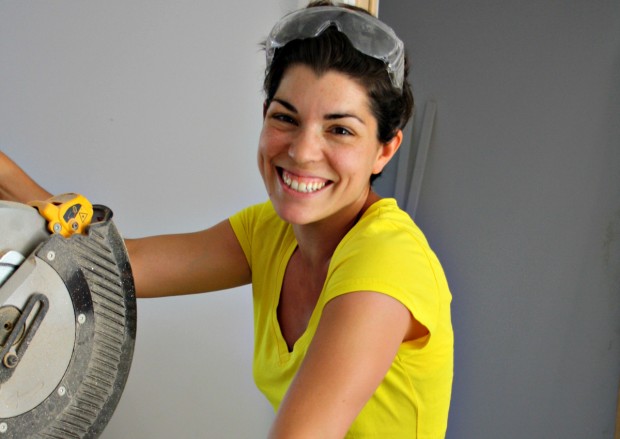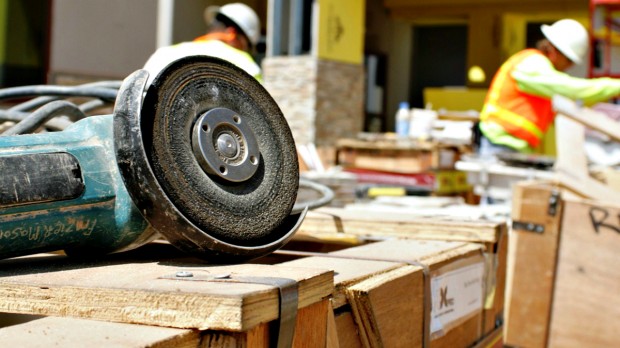6 tips to avoid turning a flip into a flop!

Do you dream of performing the perfect house flip? You're not alone.
A increasingly larger population is becoming interested in the concept of the flip, thanks in part to the rapid multiplication of television shows on the topic. Upon first glance, buying a home and renovating it to sell it for a profit may seem easy... but before embarking on such an adventure, one must make sure they're well prepared!
1. Finding the ideal gem
The first winning step rests in your choice of building: it's imperative to know how to jump onto a great deal. According to Marie-Jeanne Rivard, general contracteur and host of the show Flip de fille on the Moi & Cie network, the real challenge is finding something unique on the market.
For example, single-family homes are rare on the island of Montreal, so opting to transforme a small duplex into a cottage works out well for this true renovation lover. At the age of 33, she has already flipped over twenty houses.
Yvan Cournoyer, vice-preisdent of the Club d'investisseurs immobiliers du Québec (CIIQ) and author of the book Les flips also mentions the importance of finding a building with potential. "You have to find a deal," he adds. The purchase price of the building will inevitably have an impact on the potential profit of its resale.
That's why, armed with a magnifying glass, we're going to go on a hunt for a buried treasure and a motivated seller! One needs to be familiar with the market in order to discern a great offer from a lesser one. We suggest becoming an expert on a city or specific neighborhood rather than looking for deals all over the place.
2. Plan like a pro
According to Mr. Cournoyer, establishing three possible financial scenarios (pessimistic, realistic and optimistic) may allow you to launch a project with which you are comfortable. If you calculate making a profit even with the most pessimistic scenario, your chances of succeeding are increased.

Ms. Rivard agrees. For example, when working on a project where the estimated profit reaches $75,000 or even $100,000, she is conscious that she may only come out of it with $50,000 due to unpredictible forces. When a full renovation with wall removal is necessary, it's not uncommon to find some hidden surprises. At that stage, problems have to be solved as they occur and expenses pile up rapidly - thus the importance of keeping some funds to deal with the unpredictible.
But is it even possible to put together a realistic budget and timeline without already having sizeable experience performing flips? Our experts suggest that collaborating with a contractor might be very useful when the time comes to visit the building and to evaluate the scope of the work needed and the costs related to said work.
Read: When is the ideal timing to purchase a home?
3. Learn to delegate
You've guessed it... you won't be able to attack the flip as a lone horseman. To come out of the process a financial winner and actually get some pleasure out of the work, it's imperative that you understand your own strengths and delegate work to the right people.
Your main ally in a renovation project will be your general contractor; make sure you find a trustworthy professional. With a project numbering in the several thousands, make sure you make some very careful verifications before hiring. In order to ensure quality renovations, it will be important to delegate specialized tasks (plumbing, electricity) to qualified parties.
In your dream team, you could also collaborate with real estate agents (to help you find the perfect house) and you'll need the help of a mortgage broker or dependable banker (in order to obtain financing rapidly when the moment strikes).
It will also be very important to employ a competent building inspector in order to find any potential problems with the building; this will help you understand the kind of renovation project you'll need to undertake. Their report could also be a useful leverage tool when negotiating with the salesperson.
Read: 5 tips to follow the construction of your new home
A chartered appraiser may also come in handy. On top of confirming the property's value in its current state, this professional could evaluate how much this one will be worth once the renovations are completed. Based on the experience of the author of the book Les flips, the majority of banks will finance up to 10% of a property's value once it is renovated. "I use the chartered apparaiser's report to make sure I'm accurate in my value assessments and to obtaining financing and liquidities for the upcoming renovations," explains Mr. Cournoyer.
4. Finding financing
Obtaining financing can be a challenge for many buyers. Banks generally require a minimum deposit of 20% to purchase a house. If the required amount is not obtained, insurance on the mortagage loan must be obtained. These are offered, amongst others, by the Canadian Mortgage and Housing Corporation (CMHC).
In order to avoir mortgage loan insurance and the fees that come with it, you could associate with a partner, suggests Mr. Cournoyer. With the right team in place, a solid budget and a solid plan, finding an investor with whom to share the profit could be a solution.
According to both of our specialists, turning towards a private investor can be a good option for those who repeatedly perfor flips, but someone working toward a "renovation-flip" as owner and occupant should preferably stick to conventional loans with lower interest fees.
When it comes to financing for renovations, you could obtain a renovation loan, a formula offered by many financial institutions. You can also check if you're admissible to various grants offered by governmental organizations.
To find out how much you can borrow, contacting a mortgage broker is a good first step. You can find a few solutions on the CMHC's website.
5. Know and understand the law (taxes, licenses, etc.)
If you're the owner and occupant of the building to be renovated, you could grab the hammer yourself - provided of course that you have the manual talent to accomplish tasks that don't require particular expertise. According to the law, you cannot do this work yourself if you're planning to flip the property as an investor. You will therefore need to find a trustworthy contractor. Don't take any risks - make sure that the contractor you hire holds the necessary licenses with the Régie du bâtiment du Québec.

When you perform a renovation flip of your primary home, you'll have access to a capital gains exemption upon resale. However, "you shouldn't make it a strategy", says the vice-president of the Club d'investisseurs immobiliers du Québec. If you're flipping homes as an owner-occupant every year, the tax man could consider your profits are a business income and claim income tax on it.
Be careful. Make sure that your planned renovations are allowed by the city or town and insert a clause in the purchase agreement that allows you to cancel the offer if it isn't, suggests Marie-Jeanne Rivard.
Read: How can I cancel my offer on a house?
6. Prepare yourself mentally
Last important point before taking on a flip project as the owner and occupant: ask yourself whether you'll be able to manage the stress that the process will cause. "With renovation loans, credit cards that are filling up fast, a lack of hot water... some people panic midway through the project and sell at a loss. That's when a flip becomes a flop," says the host of the show Flip de Fille.
To put it briefly, with a good team in place, efficient planning and an understanding of what's at stake when performing a flip, the experience could be memorable, says Mrs. Rivard.
You could benefit from more advice from Yvan Cournoyer by reading his book Les flips or his training seminars for the CIIQ, and from Marie-Jeanne Rivard (photo credit: Mélissa Hébert) by following her and her adventures in the show Flip de Fille on Moi & Cie.

Stock images: Shutterstock
Related articles
Most popular articles